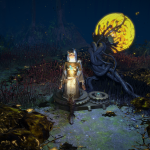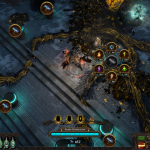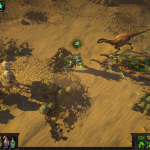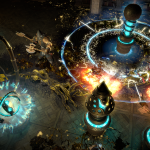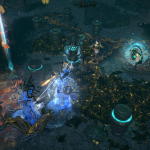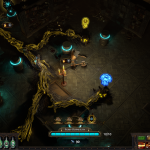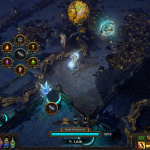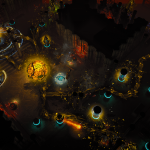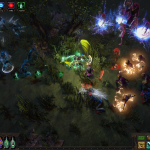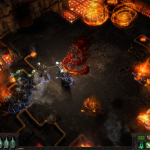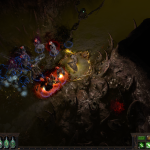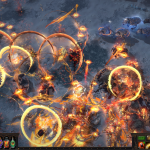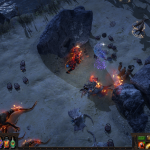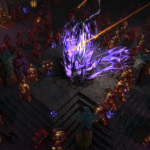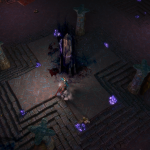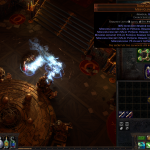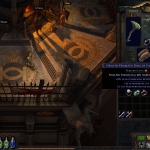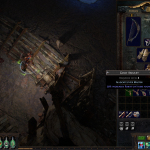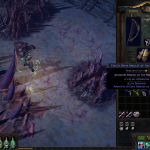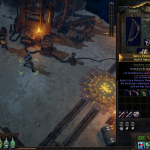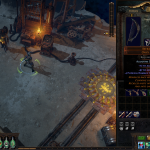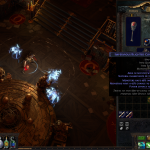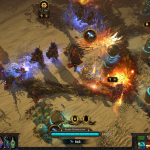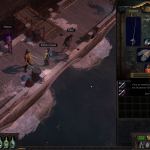
Fall is creeping up on us, and that means back to school is almost — if not already — here. That also means it is back to the beginning as Path of Exile launches another new league. Starting on September 6th for the PC and September 9th for consoles, players will get to experience Blight. It’s full of pulsing pustules, new mechanics, and everyone’s favorite, new loot!
On top of that, three archetypes are getting revamped and two previous leagues are being integrated into the core game. All this comes with an added focus on giving players even more agency as to what aspect of PoE they want to play. Producer Chris Wilson and I had the chance to explore Blight a bit more. Here’s what you can expect.

Beware the Blight
Fungus can be fun! Well, maybe not fun, but enjoyable gameplay in Path of Exile at least. Because here, you get mind-controlling fungus! The story behind this new league is that some giant fungal growths are springing up throughout the land and are controlling the minds of nearby mobs.
But don’t worry – there’s a plan. Someone always has a plan. In this case, it is Sister Cassia. This new NPC warns players about the fungal spores but also explains that she has created a special pump that can suck the ichor right out of the growths, deflating and killing them. Of course, as most NPCs tend to do, she needs help to survive the hordes of mind-controlled mobs that start swarming the device in order to protect the fungus.
This is where the player comes in.
A fungal blight will be found in every area, and the encounter will be a quick 30-to-40-second tower defense game with defined lanes. Once the blight is fitted with a pump, tendrils snake out that the mobs will mindlessly follow, ignoring any other foes not directly in front of them. Of course, mind-controlled mobs get some added oomph with their enslavement, so players will have to strategically place various towers along the paths to aid in their fight to keep the creatures at bay. Note that the towers only aid — they won’t fight the battles for you.
“The key thing here is when we’re trying to develop tower-defense content for Path of Exile is to make it that your character still matters,” Wilson explained. “You’re still the one actually killing the monsters yourself. We wanted it so that the towers are strategically important, so that you have to block up the monsters in the right places, but it actually involves running around as a player killing the monsters yourself still.” To accomplish that, different towers can buff, debuff, spawn minions, crowd-control, or pump out elemental damage to bolster your own.
 If you are not the biggest fan of tower defense, know that these encounters are quick, so they won’t monopolize your game time. “They are kind of a bite-sized thing that doesn’t distract too much from the core of the game,” Wilson told me. “So even if someone isn’t the biggest fan of the tower defense genre, there isn’t a lot of mental overhead that has to go into one of these fights.” Also, they will yield a reward chest for every lane cleared. That means you do not have to succeed in clearing all lanes or ending the encounter; you still get loot for partial success.
If you are not the biggest fan of tower defense, know that these encounters are quick, so they won’t monopolize your game time. “They are kind of a bite-sized thing that doesn’t distract too much from the core of the game,” Wilson told me. “So even if someone isn’t the biggest fan of the tower defense genre, there isn’t a lot of mental overhead that has to go into one of these fights.” Also, they will yield a reward chest for every lane cleared. That means you do not have to succeed in clearing all lanes or ending the encounter; you still get loot for partial success.
However, if you really do like the gameplay, you have the chance to enjoy much more complicated encounters in maps at endgame. There will be a new map that will be full of Blight but no regular monsters. I watched a demonstration of an encounter with 10 separate lanes, but Wilson hoped to make it 20 to 25 lanes by launch. And if you have other players with you, that will amp up the difficulty of the monsters.
 Blight bling
Blight bling
The Blight league will have two main types of special bling associated with it. First are the oils. Are you ready to enchant jewelry? Because that’s one thing Blight brings! The blight encounters drop different vials of special oils that can be mixed in every conceivable combination to enhance rings or amulets at Sister Cassia. Wilson explained that oil was specifically chosen so that players would understand that the order in which oils are combined does not matter, just like pouring real oils together would blend the same regardless of which color went first. There are five oils per tier, and 12 tiers in total (with each tier getting progressively rarer by x 3). That will make around 500 different combinations. Players will also be able to exchange three oils of the same type in one tier for one of the next tier up.
Anointed rings can help with enhancing different towers, whereas anointed amulets increase character power universally. An important fact that Wilson shared was that, unlike in previous leagues where players spent time experimenting and seeking out what combinations will have which properties, the oil combinations are actually listed out for players from the get-go. In fact, since the enhancements for amulets are actually notable passives from the skill tree (the big ones), the combination needed to make that passive will be listed right on the skill tree itself. This means players can use passives from the opposite side of the skill tree from where their points are spent.
Blight also introduces a special new set of gear that players can also anoint with oil combinations as they do with the amulets. There are four wearable pieces (gloves, boots, body armor, and three variations of helmet) that players can add the passive enhancements to, bringing the total up to five with the amulet.
That set will not be the only uniques: Ten other uniques designed to be build-defining pieces will be introduced as well. Quite a few (a couple of dozen) uniques are also being rebalanced, with six of those getting significantly overhauled.
 A word about archetype revamps
A word about archetype revamps
While Grinding Gear Games always goes into more detail closer to launch time, Wilson did highlight to me the three revamped archetypes that will be a part of Blight. First is the Necromancer, then the Poison Assassin, and finally the Mine Saboteur.
Necromancer: Wilson explained that the summoner is very popular to play; people love minions. But the Necromancer Ascendancy had a few problems to iron out to make it more powerful. In Blight, players will be able to control the behavior of their minions as a group using three support gems, each one focused on either aggressive behavior, defensive behavior, or to attack a specific target, so you can choose how your minion will behave when you use a specific skill. Also skeletons, specters, and zombies are more powerful at all levels, allowing players more freedom in specializing their minions instead of using items to grant more power.
Players will also find a new Carrion Golem (that buffs your minions) and a new wand that can have minion properties on it. One of the uniques coming is the Triad Grip Mesh Gloves that brings a whole new way for sockets to work. On these, the socket color determines where minion elemental damage is allocated. For instance, a red socket means minions convert 25% of physical damage to fire, whereas blue converts it to lightning. Now the color socket doesn’t just determine which skill gem can be slotted; it gives extra properties to minions. More minion specialization!
 Mine Saboteur: If you play this Shadow Ascendancy, you might focus mainly on the traps. However, GGG is enhancing the mines part of this path. Mines themselves have been adjusted so that they can be thrown from range, deploy faster, and detonate in sequence. Players who can detonate a long sequence of mines will be rewarded for it. For instance, Stormblast mine will have increasingly powerful shockwaves weakening enemies the more mines are detonated in sequence. Speaking of mines, I learned that three new mine skills and one new utility skill were added to enhance traps and mines. Want robots to rearm your mines? Well, you can!
Mine Saboteur: If you play this Shadow Ascendancy, you might focus mainly on the traps. However, GGG is enhancing the mines part of this path. Mines themselves have been adjusted so that they can be thrown from range, deploy faster, and detonate in sequence. Players who can detonate a long sequence of mines will be rewarded for it. For instance, Stormblast mine will have increasingly powerful shockwaves weakening enemies the more mines are detonated in sequence. Speaking of mines, I learned that three new mine skills and one new utility skill were added to enhance traps and mines. Want robots to rearm your mines? Well, you can!
Poison Assassin: Bringing back the glory days! Wilson told me that the one-time top build of the Poison Assassin fell out of favor when seriously broken critical strike math was fixed. To bring that feeling of power back, Path of Exile will offer five new skills and a new support gem to give more options to this playstyle. One of these skills is Cobra Lash: It tosses out a copy of your weapon that chains multiple times between enemies with a 100% chance to poison when it gets a critical strike.
This Ascendancy tree has a few new options for critical strike and poison builds, as well as includes a new buff called Elusive. It gives the player a defense and mobility buff that diminishes over time instead of outright switching off.
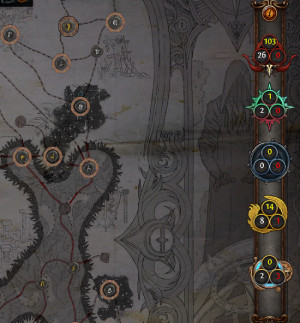 My play, my way
My play, my way
Having greater agency over how you play was an important focus according to Wilson. With Blight, GGG fixed a couple of things preventing this. In the endgame maps, players would occasionally encounter the five masters who would want them to drop everything and go do a very rewarding mission. But what if that wasn’t a good time? Too bad; you missed out. What if you didn’t have the map they wanted you to go to? Trade for it, or miss out. Basically, you lost control of what you could play when. This grated on players’ nerves.
Instead of that method, now every time players bump into the masters they will log one encounter on a running tally. Then, when players desire to run these special missions, they can use up those stored tallies. Each difficulty level of maps will record encounters separately, so you could accumulate multiple.
Let there be more league integration!
Once a league is over, it is never truly gone. If it isn’t integrated into the core game in some way right away, it still can be later. Take Synthesis, for example. This was not a favorite league among players, but the studio is putting the most popular part back into the core game. When Blight launches, the Synthesis boss fights will be available as special unique maps in the random selection of the NPC Zana. Some Synthesis unique items are also rejoining the economy, though nothing will be fractured.
Legion has been a very popular league, and Wilson explained that aspects of it are coming into the core game right away. These frozen warrior encounters can be stumbled upon in content of other old leagues. For instance, you can have a room in the Temple of Atzoatl and timeless monoliths deep underground. Legion maps will also be added to the endgame pool, and some of the legion rewards will be available through betrayal content.
Older league content is also getting some improvements – namely, Delve has been rebalanced to allow for easier access to the endgame depths and rare encounters showing up more often. Sulphite will also be a shared resource across all your characters. For Betrayal content, the final mastermind encounter will give reward rooms for every member of the Immortal Syndicate, nto just the single branch. Additionally, progress will be across all characters so you can resume progress instead of starting over even if you make a new character.
 What if your world changed every three months? What would you do differently? Path of Exile does, and MOP’s MJ Guthrie explores and experiences each new incarnation in Wandering Wraeclast. Join us biweekly for a look into each new challenge league and world expansion — and see whether MJ can finally reach the end of one world before it ends!
What if your world changed every three months? What would you do differently? Path of Exile does, and MOP’s MJ Guthrie explores and experiences each new incarnation in Wandering Wraeclast. Join us biweekly for a look into each new challenge league and world expansion — and see whether MJ can finally reach the end of one world before it ends!
